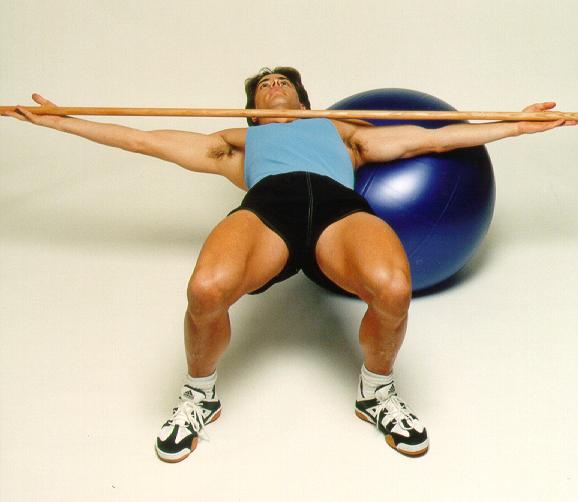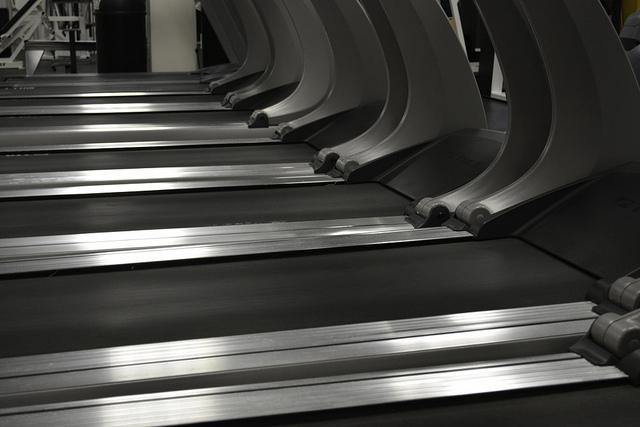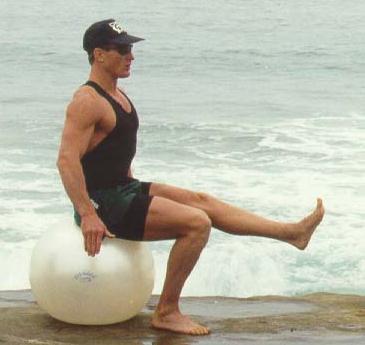Why I Use the Swiss Ball: Part 2
by Paul Chek

Of the more than 40 videos I have produced over the past 20 years, six of them have been devoted to how to exercise with the Swiss ball. I believe the Swiss ball may be one of the best, most effective and versatile exercise tools in history.
To show just why I believe this, in the first part of this series I discussed why I use the Swiss ball in balance and strength training. The last part of this short series focuses on the importance of joint stability and stretching, physical tools we take for granted until we become injured or need to get in better shape.
Joint Stability
 Frequently, joint stability is an issue with injured athletes and non-athletes, particularly when selecting exercises to maximize your workout routine.
Frequently, joint stability is an issue with injured athletes and non-athletes, particularly when selecting exercises to maximize your workout routine.
Because of the inherent architecture of our nervous and muscular systems, you are predisposed to muscle imbalance. This is partly due to the fact that you have two types of skeletal muscles that react very differently to the stress of overuse and abuse.
Tonic muscles tend to shorten and tighten, while phasic muscles lengthen and weaken when exposed to relatively the same magnitude of faulty loading or stress stimulus. The results of abuse or overuse: Muscle imbalance, postural dysfunction and, eventually, joint destruction.
After 15 years of studying orthopedic injury, kinesiology, biomechanics, strength and conditioning and related subspecialties, I have developed numerous highly effective exercises for improving spinal and peripheral joint stability.
For example, the Supine Lateral Ball Roll is an exercise that allows development of the intrinsic spinal stabilizers, the stabilizers of the foot/ankle complex, hip, pelvis, shoulder girdle and the neck.
This is what I call a Big Bang exercise because it conditions the body in all planes of motion at once. When done with perfect form, the participant is required to activate the weak muscles in any chain of muscles stabilizing any or all body segments.
One of the reasons people get joint injuries is because their motor system becomes deconditioned and sluggish, according to the late Dr. Vladimir Janda. A sluggish motor system results in slowed reaction times and can lead to unwanted joint pain.
For example, imagine walking down the street and you miss seeing a curb. When you step off the curb, your body will have to suddenly react to the unexpected drop of several inches.
Because you are stepping forward, your lumbar spine (low back) will be in extension when your foot hits the ground. If your stabilizer system is sluggish, you will not be able to react quickly enough to protect the joints in the lower lumbar region from acute compression and compressive forces caused by uncoordinated, asymmetrical recruitment of the muscles supporting the spine.
By using a Swiss ball as part of your weekly training routine, however, you can improve your reaction time because the ball is round and moves very quickly under your body with any change in your center of gravity.
As you become more comfortable on the ball, you can begin reducing your base of support, which will result in the ball reacting to your body faster and faster, which will require that you react faster and faster too! As you improve, your chances of injury will drop progressively.
Stretching
Stretching is an integral part of any rehabilitation or conditioning program. Because of its spherical shape, the Swiss ball is excellent for stretching the abdominals and mobilizing the spine into extension.
This is very useful with so many seated workers currently suffering from poor ergonomics and forward head posture. Stretching regularly on the Swiss ball helps lengthen muscles and prevent muscle imbalance, while improving circulation and restoring freedom of movement to the joints.
 There are complete Swiss ball warm-up and stretching routines in the Swiss Ball Exercises for Better Abs, Buns and Backs and Swiss Ball Exercises for Athletes video programs.
There are complete Swiss ball warm-up and stretching routines in the Swiss Ball Exercises for Better Abs, Buns and Backs and Swiss Ball Exercises for Athletes video programs.
The Swiss ball really is an amazingly useful tool! I have been using it almost daily for more than two decades and continue to develop new stretches and exercises.
My patients love Swiss balls because they are fun and they can exercise with them at home. The athletes love them because they can get a tremendous workout and an equally good stretching session.
I am sure that you will find the Swiss ball one of the most comfortable chairs you have ever tried too. In fact, most of my patients tell me that when they took their ball to work, other employees kept taking it for themselves!
I hope you find the Swiss ball as beneficial to your life and sports conditioning as I have in mine.
Love and chi,
Paul


